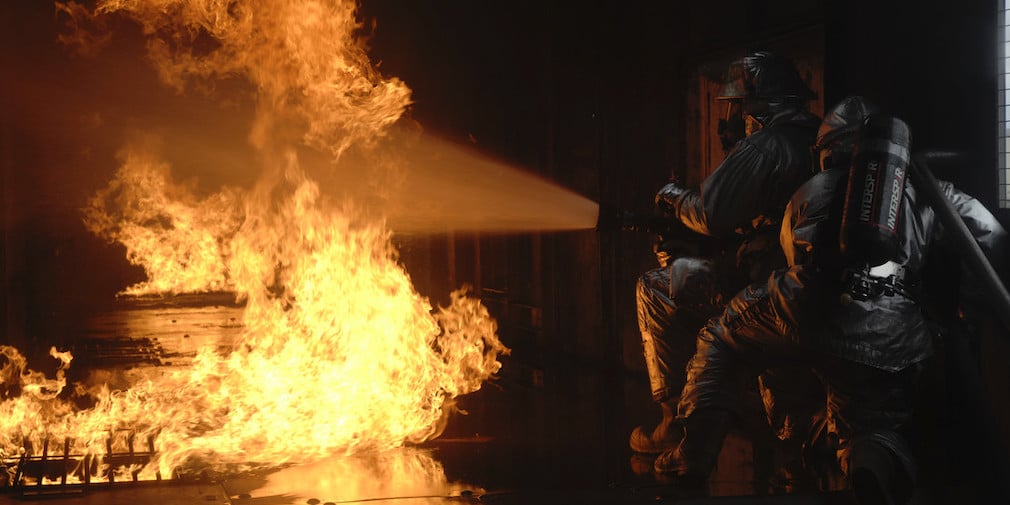A move to a new energy system based on solar, wind and batteries brings many benefits, including potentially cheaper electricity, greater reliability (via distributed generation & storage), and of course reduction of greenhouse gas emissions. But there are inevitably downsides and risks to any major change. And some of the risks we are just now learning about.
As anyone who has tried to board a plane with a Samsung Galaxy Note 7 phone knows, lithium ion batteries can be subject to a phenomenon known as “thermal runaway”, whereby they enter a self-reinforcing heating cycle that can end in a fire. This fire can’t be put out with water, which only makes the situation worse.
And unfortunately, such fires are also not limited to smartphones. On April 19, a 2 MW battery at an APS facility in Arizona exploded, injuring four firefighters and leading one Arizona regulator to state that lithium-ion creates “unacceptable risks,” and to call for a look at other energy storage technologies.
As reported by the Arizona Republic, in the aftermath of this fire, the cities of Phoenix, Peoria and Surprise have passed laws that, for the first time, require special permits and certain safety features when lithium-ion batteries are installed. These represent the first implementation of federal fire safety standards.
But industry is not waiting for the next fire. Today Energy Storage Association (ESA) launched a 43-page draft emergency response plan for energy storage facilities. This document is intended to provide model language for individual site plans to deal with everything from fires to floods and earthquakes.
But fires are the first danger mentioned. ESA notes that battery systems represent “a unique challenge” for firefighters. The document further explains that energy storage systems do not have a single point of disconnect, and that while there are disconnects that de-energize certain parts of the system, that batteries will remain energized.
This leads to multiple dangers if water is used. Not only does ESA identify the danger of a shock or arcing hazards if fire is present, but also notes that water can “react” with the chemistries present – which is true of some of the most common types of lithium-ion batteries that are currently deployed.
Ultimately, the document stresses preparation and education. As noted by ESA, local fire departments need to be informed of appropriate fire suppression methods for each energy storage site, and that if “unconventional fire extinguishers” are required, that local first responders need to be alerted to this and trained to use them.
Like fires as solar plants, fires at battery facilities remain rare. But they can still happen, and for the industry to move forward, safety needs to come first.
This content is protected by copyright and may not be reused. If you want to cooperate with us and would like to reuse some of our content, please contact: editors@pv-magazine.com.









Seek Thermal is developing an inexpensive condition monitoring system for energy storage facilities. Thermal runaway can be seen with fixed mounted thermal cameras long before fires erupt, with alerts sent to the appropriate parties. We are looking for additional trial sites. Please contact Kelly Brodbeck at Seek Thermal if you are interested in participating in this program.
kbrodbeck@thermal.com
While I appreciate everything contained in this article, I really wish you had further defined (and DELINEATED) between chemistries . . . . . Instead of the blanket statement “lithium ion batteries can be subject to a phenomenon known as “thermal runaway”” . .Which we know pertains to cobalt chemistries and not LFP chemistries . . . Let’s please not lump all Li-Ion batteries into the same category. Which brings me to my last point, PLEASE BOYCOTT AND DISCONTINUE USE OF COBALT CHEMISTRIES!!
If the actual electrolyte is the problem, find another way. The perhaps “grandfather” of the lithium ion battery Goodenough, has a team in Texas that thinks they can create the solid state battery. Before we get too entrenched into a lithium ion, (VOC electrolyte), let’s try some redox flow batteries, even recently NEC is taking on Don Sadoway’s AMBRI molten metal battery technology. Yes, redox flow technology is large scale compared to lithium ion technology. But, no one seems to mind hydro generation or pumped hydro storage, also very large area storage resources. One can put redox in the solar farm or wind farm existing acreage without gradients to create pressurized flow for generation.
The NEC web site has a news release: NEC to Develop Energy Storage Systems with Cells from Ambri Inc.
So Storen builds a Vanadium flow battery. Why use Lithium?